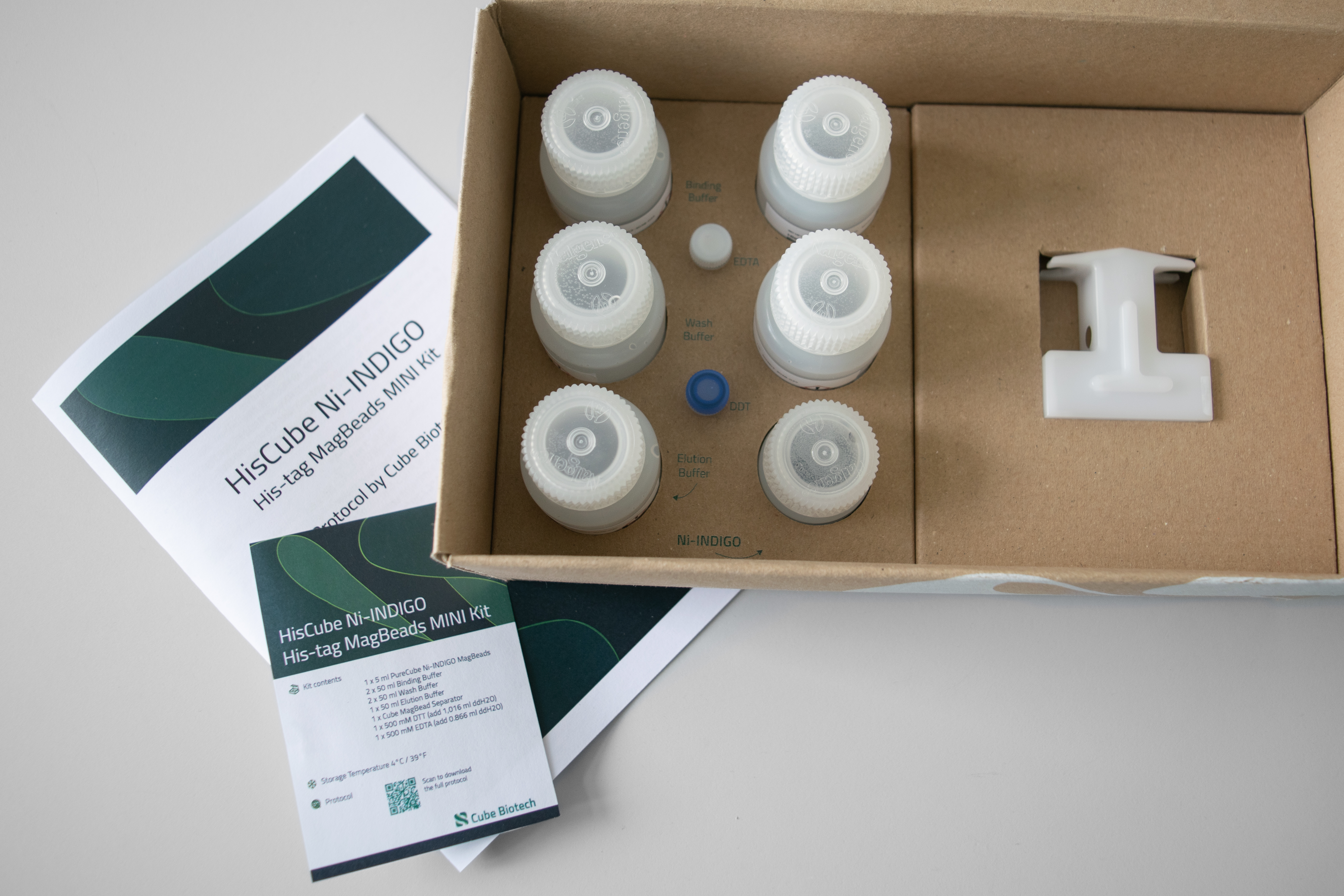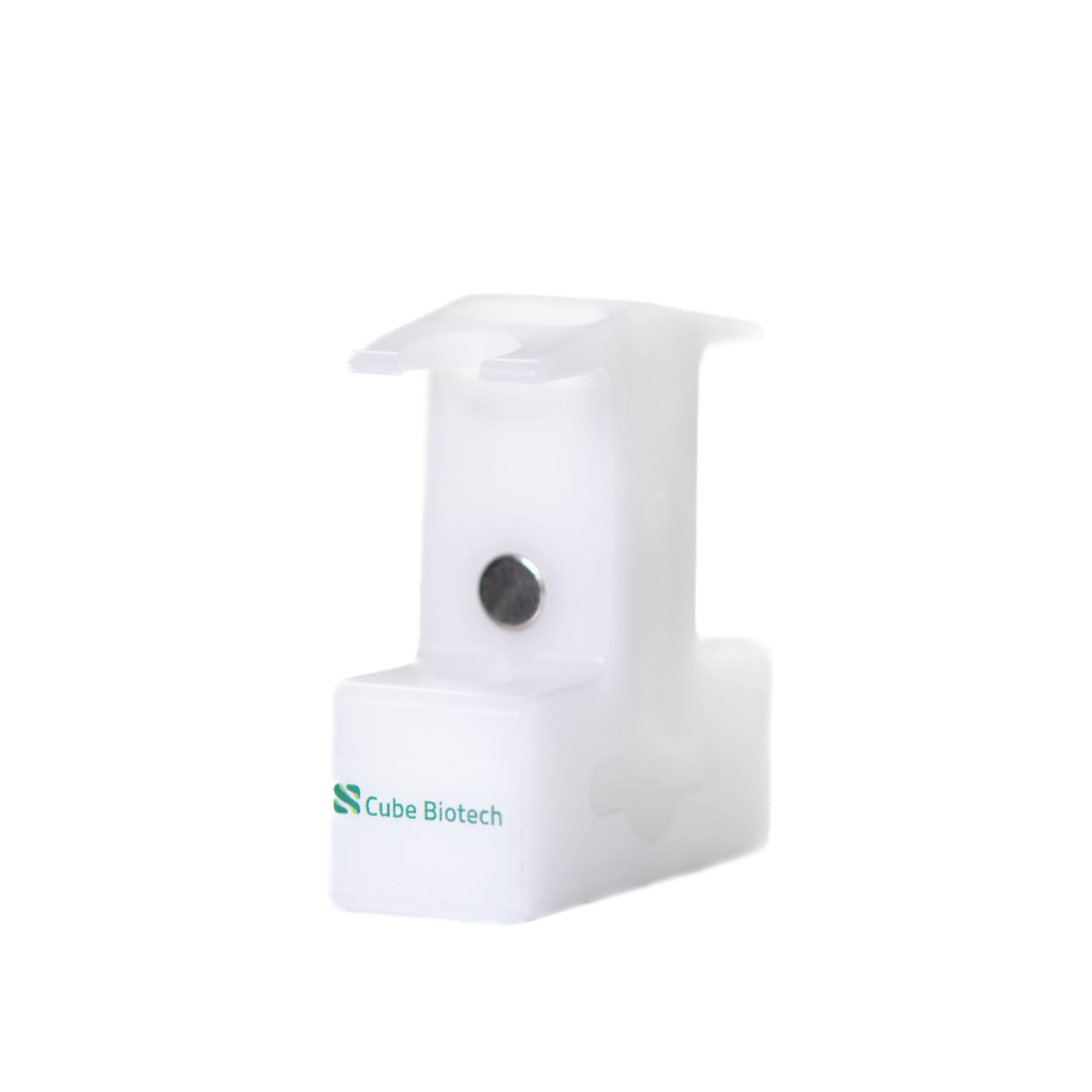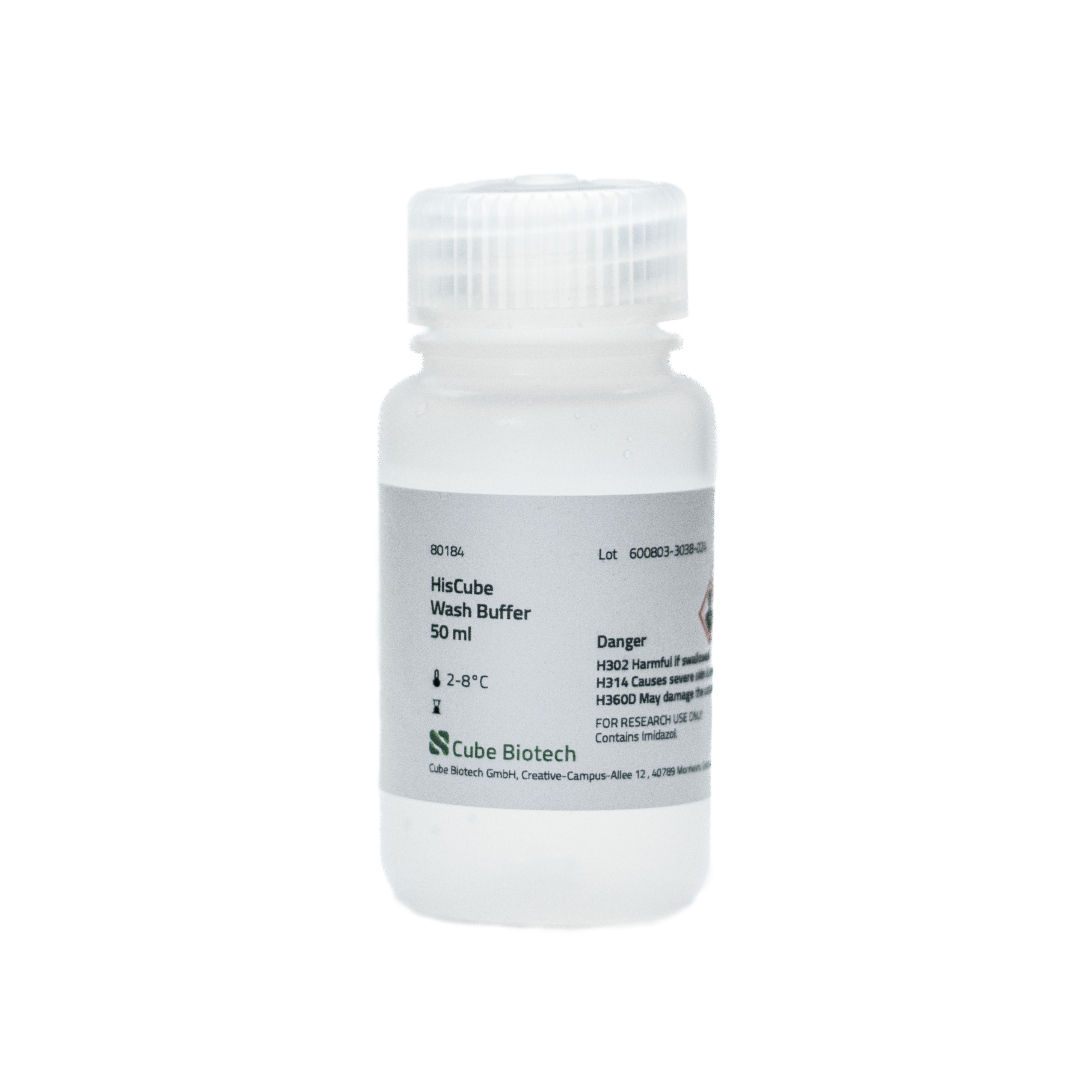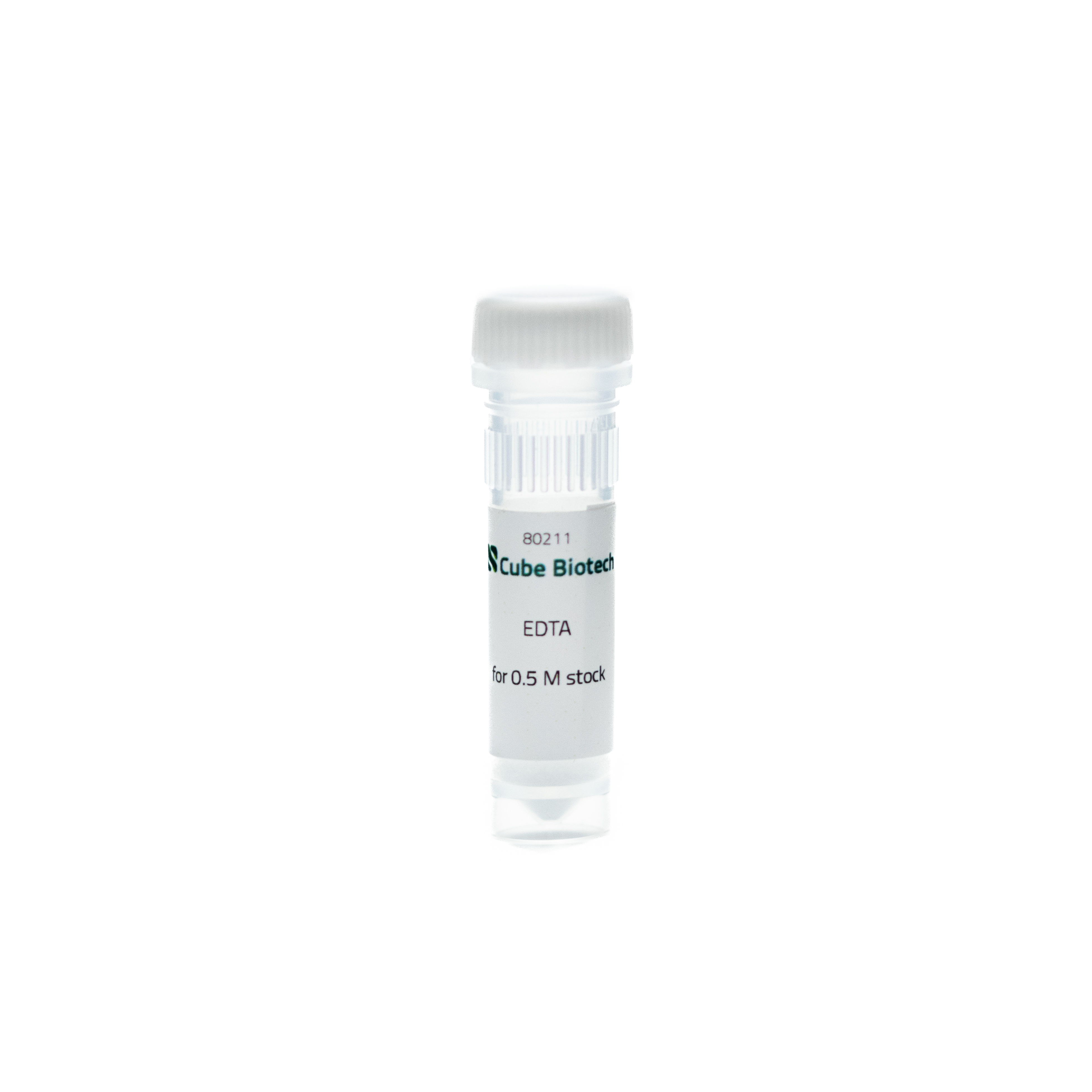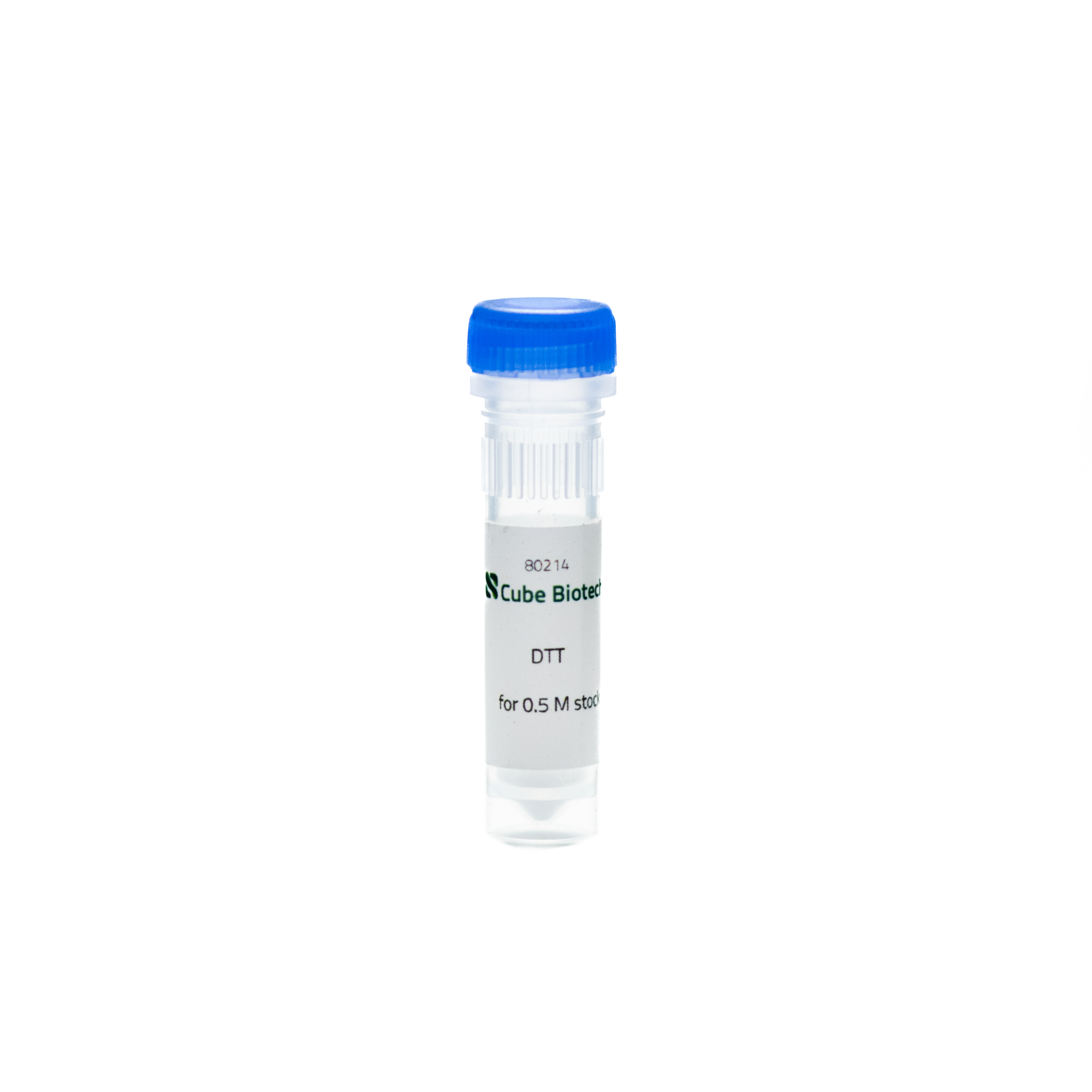HisCube - Ni-INDIGO MagBead Protein Purification MINI Kit
Order number: 80201
Description
The HisCube MagBead protein purification MINI Kit is designed to meet the demands of your laboratory for efficient and high-quality small-scale His-tag protein purifications. Our team of experts has put their extensive knowledge and experience in His-tag purifications into the development of this kit, resulting in a streamlined protocol that is easy to follow. The included MagBead separator is a testament to our commitment to delivering a comprehensive and user-friendly solution.
The HisCube INDIGO-Ni MagBead MINI Kit contains our in-house developed PureCube INDIGO Ni-MagBeads.
The major benefit of INDIGO is its tolerance for chelating and reducing agents. While these can be a huge assistance in His-tag purifications, they are not tolerated by conventional His-tag affinity beads. EDTA is a chelator that is often used in eukaryotic cell buffers because it has protease-inhibiting functions. DTT can dissolve protein aggregates that could potentially hinder the access of the purification beads to the His-tagged proteins. However, both chemicals are now usable because of INDIGO. As a result, they are a part of the Kit.
The HisCube INDIGO-Ni MagBead MINI Kit contains our in-house developed PureCube INDIGO Ni-MagBeads.
The major benefit of INDIGO is its tolerance for chelating and reducing agents. While these can be a huge assistance in His-tag purifications, they are not tolerated by conventional His-tag affinity beads. EDTA is a chelator that is often used in eukaryotic cell buffers because it has protease-inhibiting functions. DTT can dissolve protein aggregates that could potentially hinder the access of the purification beads to the His-tagged proteins. However, both chemicals are now usable because of INDIGO. As a result, they are a part of the Kit.
Datasheets
| Contents of the Kit |
|---|
| 2 x 50 ml Binding Buffer |
| 2 x 50 ml Wash Buffer |
| 1 x 50 ml Elution Buffer |
| 1 x 5 ml Ni-INDIGO MagBeads |
| 1x MagBead Separator |
| 1 x 500 mM DTT (add 1,016 mL ddH2O) |
| 1 x 500 mM EDTA (add 0.866 mL ddH2O) |
| Print-out of the protocol |
| Print-out of the fast protocol |
| Feature - INDIGO-Ni resin | |
|---|---|
| Usage | Specific binding and purification of 6x His tagged proteins |
| Specificity | Affinity to His-tagged proteins |
| Binding capacity | >100 mg/mL |
| Bead Ligand | INDIGO-Ni |
| Bead size | 90 μm |
| Filling quantity | Delivered as a 50 % suspension |
| pH stability | 2-14 |
| Chelator stability (e.g. EDTA) | 20mM |
| Reducing agent stability (e.g. DTT) | 20mM |
| Other stabilities | 100% methanol, 100% ethanol, 8 M urea, 6 M guanidinium hydrochloride, 30% (v/v) acetonitrile |
| Feature - MagBead separator | |
|---|---|
| Usage | Separation of magnetic beads from the supernatant |
| Separation of magnetic beads from the supernatant | 1.5 ml and 2 ml microcentrifuge tubes (Eppis) |
| Design | Modular (2 microcentrifuges tubes / Module): Can be put together onto a larger rack easily. |
| Magnet strenght | Above average. To ensure no magnetic beads get lost during the separation process. |
| Area covered on work bench | 3 cm2 per module |
| Cap holder | Inculded, so that microcentrifuge tubes do not fall close if not wanted. |
| Color | white |
Lab Results
INDIGO was developed to solve two problems when it comes to His-tag protein purifications:
The chelator ligand is mostly responsible for the tolerances against chemicals, capacity, and purity. Therefore the goal was to develop & introduce a ligand that withstands commonly used reagents like EDTA, DTT and phenanthroline to give the user a huge benefit.
- The tolerance to certain cell buffer ingredients
- The comparatively low purity of His-tag purifications in general
The chelator ligand is mostly responsible for the tolerances against chemicals, capacity, and purity. Therefore the goal was to develop & introduce a ligand that withstands commonly used reagents like EDTA, DTT and phenanthroline to give the user a huge benefit.
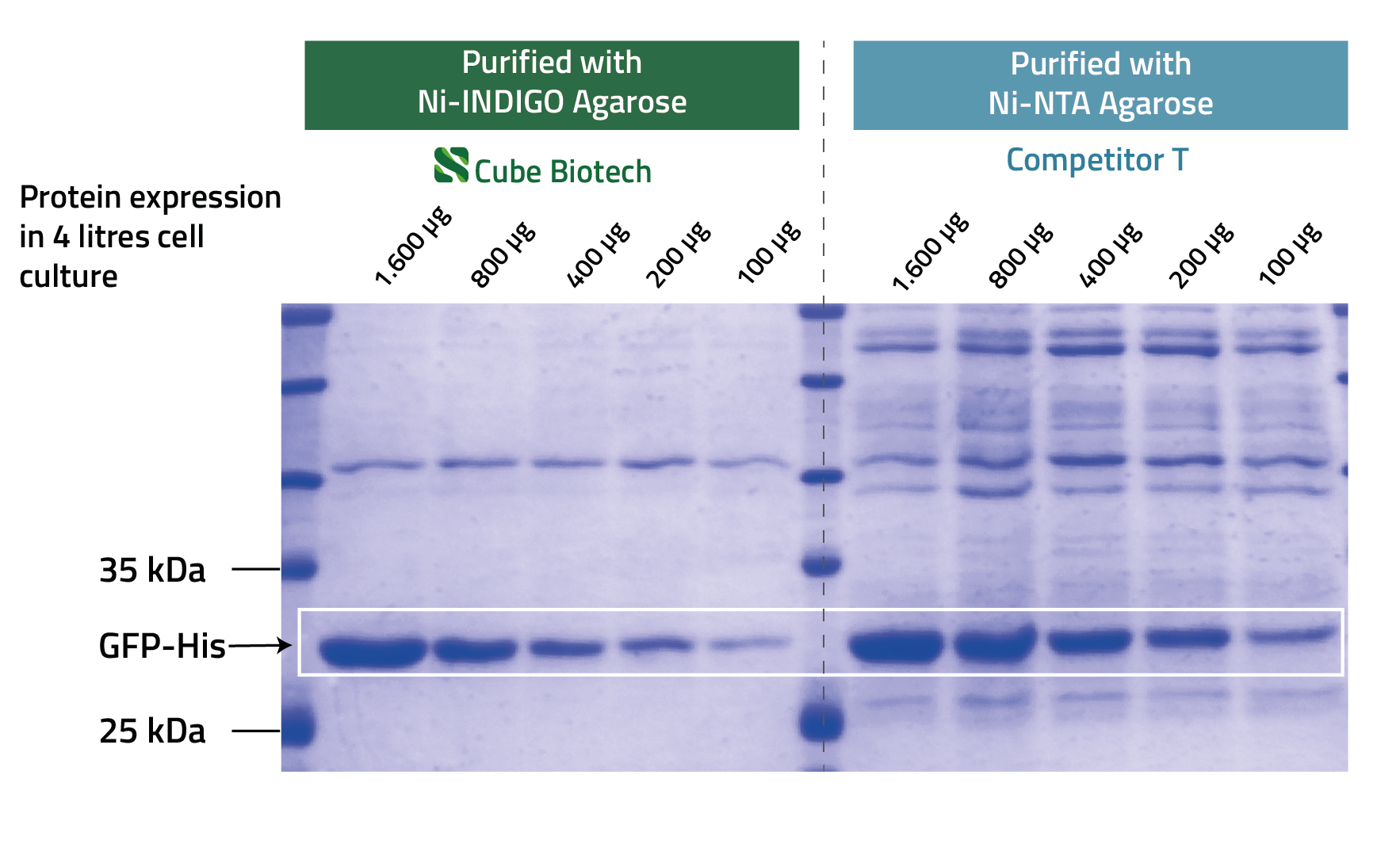
EDTA and DTT resistance of the INDIGO ligand
Protein purification is not limited to simple organisms like E.coli. Also more complex cells like mammalian cells or insect cell lines can be used to express & purify proteins. These systems come with more complex buffer compositions and some of their ingredients may interfere with traditional IMAC ligands. These include:
EDTA is often used in mammalian cell buffers to inhibit any proteases that would decrease the protein yield. But it also strips the NTA and IDA ligands of their nickel ions, thus making the beads useless.
DTT on the other hand can be used to dissolve protein aggregates in the cell lysate that might hinder the access to the protein's His-tag. By reducing nickel, thus making the beads useless.
Phenanthroline as a protease inhbitor is a strong chelator. And therefore behaves similar to EDTA.
To address all these issues, our R&D Team developed our INDIGO ligand that increases to EDTA, DTT and phenanthroline tolerance of a His-tag purification procedure up to 20 mM each.
Protein purification is not limited to simple organisms like E.coli. Also more complex cells like mammalian cells or insect cell lines can be used to express & purify proteins. These systems come with more complex buffer compositions and some of their ingredients may interfere with traditional IMAC ligands. These include:
EDTA is often used in mammalian cell buffers to inhibit any proteases that would decrease the protein yield. But it also strips the NTA and IDA ligands of their nickel ions, thus making the beads useless.
DTT on the other hand can be used to dissolve protein aggregates in the cell lysate that might hinder the access to the protein's His-tag. By reducing nickel, thus making the beads useless.
Phenanthroline as a protease inhbitor is a strong chelator. And therefore behaves similar to EDTA.
To address all these issues, our R&D Team developed our INDIGO ligand that increases to EDTA, DTT and phenanthroline tolerance of a His-tag purification procedure up to 20 mM each.

INDIGO's protein purity compared to Ni-NTA & reuseability
As previously mentioned, His-tag protein purification assays can fall behind in terms of purity compared to other affinity tags. Good examples for this are antibody-affinity tags like FLAG or Rho1D4.
On the other hand, FLAG and Rho1D4 purifications, result in very low protein amounts (up to 3-4 mg/ml resin at best) and are better suited for proteins with low abundance.
As previously mentioned, His-tag protein purification assays can fall behind in terms of purity compared to other affinity tags. Good examples for this are antibody-affinity tags like FLAG or Rho1D4.
On the other hand, FLAG and Rho1D4 purifications, result in very low protein amounts (up to 3-4 mg/ml resin at best) and are better suited for proteins with low abundance.
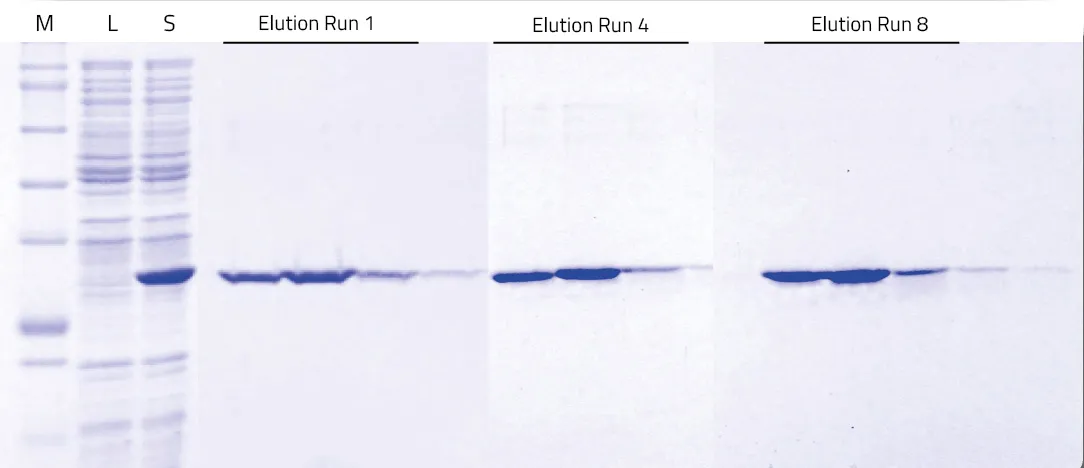
His-tag protein purification achieves the highest possible protein yields. In our in-house quality controls for Ni-INDIGO resin we usually get around 100 mg protein per ml resin. The protein used for the quality controls is His-tagged GFP. This Video-Guide shows His-Tag purification using our His-Affinity beads.
Furthermore, INDIGO beads can be reused multiple times as demonstrated in figure 3. In addition to that they can be regenerated following this protocol.
Video
Video Guide - How to upscale MagBead purifications by Dr. Michael Erkelenz
Video Guide - How to use MagBeads by Dr. Roland Fabis
FAQ
Can I get the protocol and/or datasheet for the HisCube Ni-INDIGO MagBead MINI Kit?
What are the reasons for nonspecific binding?
Some histidine-rich proteins can also bind to nickel. But washing with NaOH after elution of your protein of interest removes unspecific bound proteins from your resin.
Why should I add EDTA to my His-tag purification buffers?
EDTA is a chelator, meaning it binds cations. Cations are common Co-factors for proteases. The addition of EDTA, therefore, ensures that proteases that may still be present in your solutions, become inactive.
Why should I add DTT to my His-tag purification buffers?
DTT is a reducing agent. Its purpose is to mimic the natural reducing tendency of the cytosol. With it, proteins can aggregate through the formation of new, unwanted disulfide bridges. DTT prevents this from happening.
I ran out of one of the chemicals or materials of the HisCube MINI Kit. Can I order it separately?
Of course, you can! Here is the list of chemicals/materials that you can order on their own.
Can INDIGO-Ni beads be stripped like NTA or IDA beads?
No, this is not possible.
Can I reuse INDIGO-Ni beads or can I regenerate them?
Yes, you can reuse the beads! We recommend using our INDIGO washing & regeneration protocol at least after every 5th use of the beads.



